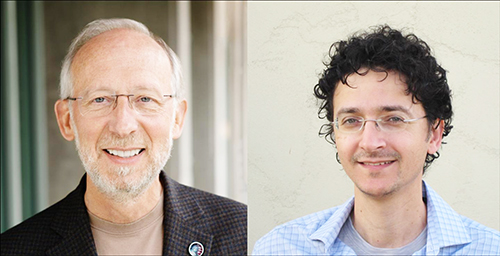The researchers also found that certain molecules, when added to cancer drugs, can prevent chromosome shattering from occurring in a discovery that may be useful to pathologists and oncologists
Anatomic pathologists who diagnose tissue and closely monitor advances in cancer diagnostics and therapy will be interested in a recent study into how a mutational process known as chromothripsis (chromosome shattering) can promote cancer cell growth in humans and increase resistance to cancer drug therapies.
The study, which was published in the journal Nature, titled, “Chromothripsis Drives the Evolution of Gene Amplification in Cancer,” provides insights into how cancer cells can adapt to different environments and also may suggest potential solutions to drug resistance among cancer patients.
Led by researchers from the University of California San Diego School of Medicine and the UC San Diego branch of the Ludwig Institute for Cancer Research, the discovery could open up a new field in cancer diagnostic testing, where the pathology laboratory analyzes a cancer patient’s tumor cells to determine where chromosomal damage exists. This knowledge could then inform efforts to repair damaged chromosomes or to identify which therapeutic drugs would be most effective in treating the patient, a key element of precision medicine.

Shattered Chromosomes
Chromosomes that undergo chromothripsis shatter or fragment into several pieces and then are stitched back together by a DNA repair processes. However, not all of the fragments make it back into the repaired chromosome, and this can be a problem.
“During chromothripsis, a chromosome in a cell is shattered into many pieces, hundreds in some cases, followed by reassembly in a shuffled order,” Shoshani told Genetic Engineering and Biotechnology News (GEN News). “Some pieces get lost while others persist as extra-chromosomal DNA (ecDNA). Some of these ecDNA elements promote cancer cell growth and form minute-sized chromosomes called double minutes.”
Studies have shown that up to half of all cancer cells contain cancer-promoting ecDNA chromosome fragments.
Some Cancer Drugs Could be Fueling Drug Resistance
To perform their study, the UC San Diego/Ludwig scientists sequenced entire genomes of cancer cells that had developed drug resistance. Their research revealed that chromothripsis prompts and drives the formation of ecDNA and that the process can also be induced by some chemotherapeutic drugs. The researchers also discovered that the particular type of damage these drugs may cause can provide an opening for ecDNA to reintegrate back into chromosomes.
“We show that when we break a chromosome, these ecDNAs have a tendency to jump into the break and seal them, serving almost like a DNA glue,” Shoshani said in the news release. “Thus, some of the very drugs used to treat cancers might also be driving drug resistance by generating double-stranded DNA breaks.”
Preventing DNA Shattering and Reducing Drug Resistance
The scientists also discovered that ecDNA formation could be halted by pairing certain cancer drugs with molecules that prevent DNA shattering from occurring in the first place, thus reducing drug resistance.
“This means that an approach in which we combine DNA repair inhibitors with drugs such as methotrexate or vemurafenib could potentially prevent the initiation of drug resistance in cancer patients and improve clinical outcomes,” Shoshani said.
“Our identifications of repetitive DNA shattering as a driver of anticancer drug resistance and of DNA repair pathways necessary for reassembling the shattered chromosomal pieces has enabled rational design of combination drug therapies to prevent development of drug resistance in cancer patients, thereby improving their outcome,” Don Cleveland, PhD, Head of the Cleveland Laboratory of Cell Biology at the Ludwig Institute for Cancer Research and one of the authors of the paper, told GEN News.
This research from the University of California San Diego School of Medicine and the UC San Diego branch of the Ludwig Institute for Cancer Research is the latest example of how scientists have gained useful insights into how human genomes operate. More research and clinical studies are needed to solidify the advantages of this study, but the preliminary results are promising and could lead to new cancer diagnostics and therapies.
—JP Schlingman
Related Information:
Shattered Chromosomes Found to Promote Cancer Cell Growth
Ludwig Cancer Research Study Reveals how ecDNA Forms and Drives Cancer Drug Resistance
Chromothripsis Drives the Evolution of Gene Amplification in Cancer



